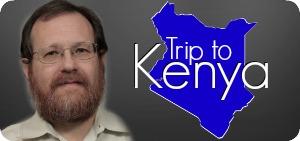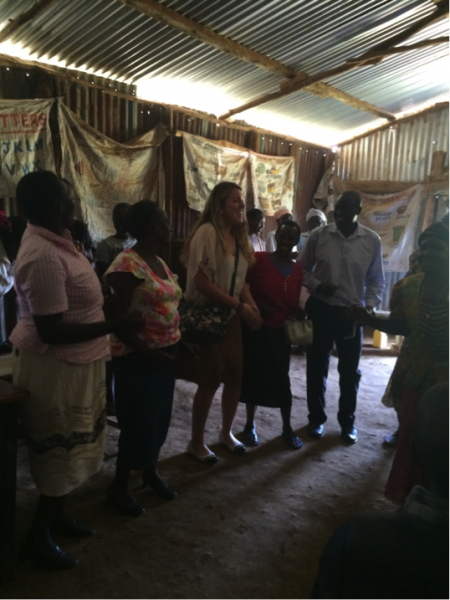
This blog article comes from David Edelman, MD, Associate Professor of Medicine here at Duke. He recently returned from a week-long trip to Kenya as part of a grant on which he is an investigator. The grant (with key investigators from Mount Sinai, Moi University School of Medicine in Eldoret, Kenya, and Duke) is a randomized trial that aims to study the efficacy of group medical clinics for diabetes and hypertension in western Kenya. Here is his story:
The purpose of this particular visit was for me to learn as much as possible about the structure of healthcare for these illnesses in western Kenya, so that I could advise the team on how best to set up group medical clinics. As a result, my itinerary took me to several different clinical locations.
The first “clinic” I visited was a small home in a rural location about 20 miles north of a town of 20,000. The study design for the grant is a factorial design, with the other intervention being microfinance groups. Microfinance is a strategy for overcoming ordinary citizens’ lack of access to capital in the developing world, allowing for small business growth and return on savings. The hope is that microfinance will provide a lure that improves the reach of the group clinic intervention.

(See image to the left: Microfinance group in action, meeting in a rural school room. This group returned 100% dividend on investment in 2015.)
A team of a physicians’ assistant and a pharmacist attended the microfinance group; members publicized the arrival of these professionals throughout the village. At the house, the microfinance group met, and each member was allowed to go out onto the 2 x 6 foot porch to have her/his hypertension and diabetes managed by the traveling providers. Additionally, anyone in the village who wanted care for hypertension and diabetes could also attend the clinic.
I also attended an HIV clinic. Kenya has done excellent work on HIV treatment; partnerships between the government and foreign non-governmental organizations have allowed anti-retroviral agents to be free in Kenya. The consequence of this is that the HIV clinic is not as much an AIDS clinic as it is a hypertension clinic among patients with HIV infection but no viral load. I also attended an “NCD” (non-communicable disease) clinic, which is the bread-and-butter clinic for treating diabetes and hypertension in Kenya and involved something that felt more like USA primary care than anything else I did.

After microfinance group was over, a celebratory dance was performed. (See picture on the right) From left to right: The president of the microfinance group; the treasurer of the microfinance group; the study coordinator for the grant; microfinance group member; Kenyan co-investigator on the study.
Overall, due to lack of resources and technology, the clinics had the look, the structure, of something very non-American (e.g., non-sterile open rooms, very limited diagnostic testing, no cholesterol management). That said, the content of care, the process, involved the same constructs that we address in the USA and which are universal to primary care (e.g., discussions focusing on medication adherence, removing salt from the diet, competing demands such as managing chronic pain).
Finally, we visited a microfinance group with no clinical activity. This particular group is very welcoming to visitors, and allowed photos:
It was a terrific week; I can’t remember learning more information faster at any time since I was an intern. I look forward to going back to audit the group clinics once they start, less for fidelity to USA group clinics and more to understand and learn from the differences.